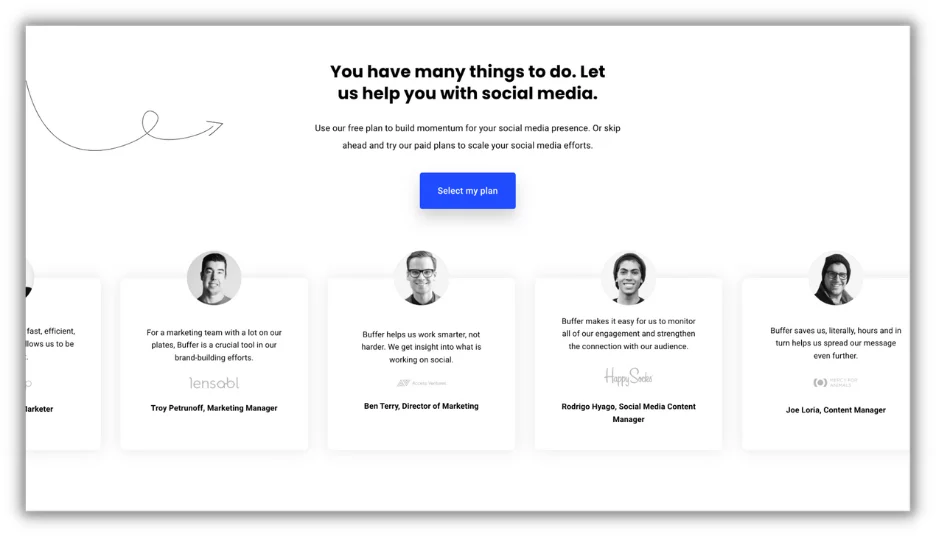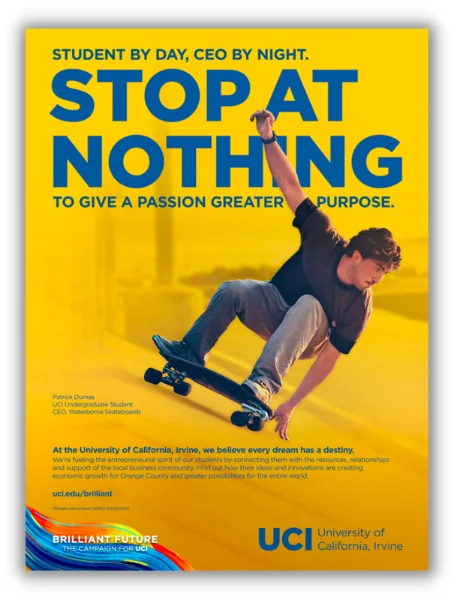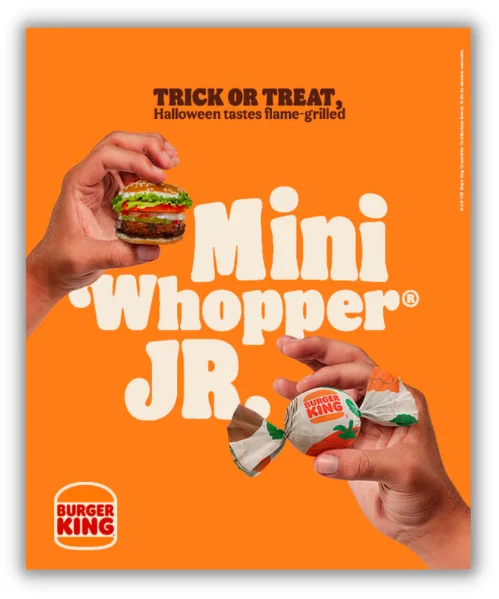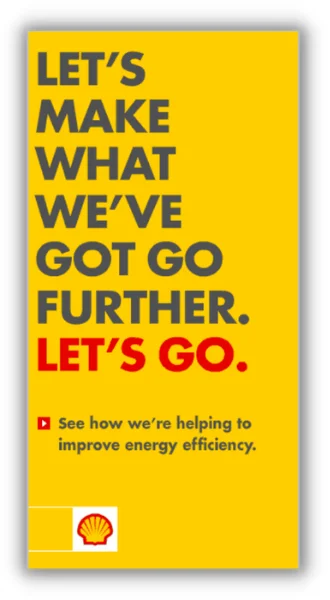Why do people buy? It’s a question marketers have asked themselves for decades. Centuries, even. You have a product or service. You know your product or service solves a very tangible problem. You even know who your ideal customer is. But what hidden mechanism inside that customer pushes them from the point of “I’m considering it” to “I’m committed to buy?” And how do you craft the kind of messaging that appeals to said mechanism?
That’s what we’re here to talk about today. Turns out, there are five key motives that lay dormant within all prospective buyers. And as a marketer or business owner, it’s your job to appeal so strongly to those hidden motives that your customer has no choice but to pull the trigger.

The five key buying motives we’re going to discuss today are, in order:
- The need for security
- The need for esteem
- The need for self-actualization
- The need for variety and novelty
- The need for efficiency and convenience
Let’s dive in.
1. The need for security
Chance the Rapper was onto something when he wrote I Might Need Security. Every person on earth seeks security in some fashion—even the greatest risk-takers and independent souls—need for security is one of the key motives that drives consumer behavior.
The need for security is rooted in the fundamental human desire for safety and protection. It can be triggered by a number of factors, from physical threats, to financial instability, to emotional vulnerability–the list goes on.
How does that relate to consumer behavior? Well, consumers who are motivated by the need for security tend to value products and services that offer reliability, predictability, and stability. They are risk-averse, and generally speaking, are hesitant to try new things or take chances that could compromise their safety or well-being.
Well, at least the part of them that needs security is averse to these things.
That doesn’t mean you need to suddenly back all of your products with a 30-day money-back guarantee. But it does mean that, in order to appeal to the need for security, you need to focus, above all else, on building trust with your customers.
Testimonials, reviews, and case studies can be massive when it comes to making your customer feel like they are in safe hands. This is invaluable marketing collateral that you should promote on your website, product pages, email campaigns, sales calls–anywhere you get the chance. If you’re a B2B business, try offering a free trial or demo to give customers the chance to actually use your product before committing.

Testimonials, case studies, and reviews can all go a long way in appealing to your prospects’ need for security.
Everybody has been burned before. Everybody has bought that one product or service and immediately experienced buyer’s remorse; or worse, been done tangible or financial harm.
Emphasizing safety and trust, being transparent, and specifically highlighting your track record of integrity and credibility, can go a really long way in assuaging those concerns for buyers.
2. The need for esteem
The need for esteem is a powerful buying motive that is driven by the human desire for recognition, respect, and status. People who are motivated by the need for esteem want to feel valued and respected by others, and as such, they often seek out products and services that enhance their image and social status.
Think about that one person you know who (either personally or second-hand), has the G-Wagon in their garage. Rest assured, the need for esteem was heavily involved in that purchase, and you better believe that Mercedes appeals to that need in its messaging.

Interestingly, Mercedes stresses safety and strength in a lot of its G-Wagon ads (thus appealing to the need for security), but the need for esteem is clearly present in this one.
Messaging: My Car Is My Castle.
Implication: Buying a G-Wagon is akin to owning an enormous, stone-clad home that people will find universally impressive.
Appealing to the need for esteem requires you, as a marketer, to focus on building a strong brand identity that communicates prestige, quality, and exclusivity.
Here are some time-honored strategies you can use to do just that:
- Go hard on exclusivity. Those motivated by the need for esteem are much more likely to buy your product if it is a limited edition, of “premium” quality, or if it equips them with status among their peers.
- Offer personalized experiences. Think about the luxury shirt company that brings a customer in, offers him a glass of whisky, and brings out a distinguished-looking gentleman to tailor his shirt. By offering personalized products or services, you can appeal to the need for esteem.
- Leverage social media influencers and celebrities. We talk a lot about social proof in marketing, and there’s no better way to show your customer they’re among elite company than by partnering with a celebrity or an esteemed influencer.
Market your product as elite, and you’ll have customers that value esteem in your back pocket.
3. The need for self-actualization
You know that one friend who, no matter what job or career they’re in, can’t seem to find satisfaction? The need for self-actualization is strong with this one.
The need for self-actualization is driven by the desire to reach one’s full potential and achieve personal growth and fulfillment. People with this buying motive seek out products and services that help them develop their skills, pursue their passions, and achieve their goals.
While we don’t all have the benefit of marketing a nonprofit, you can and should stress that by purchasing your product, your customers can either better themselves, better their situation, or better the situations of those around them.

Attend UV Irvine, and you can give a passion greater purpose (thereby achieving your full potential).
Here are some examples of self-actualization in action:
- Your software helps business owners save valuable time and money–time and money that they can in turn devote to cultivating their passions or running their businesses.
- Your ecommerce brand donates a portion of all sales to charity, thereby making the buyer feel better about their purchase.
- Your online class helps customers learn a valuable skill that they can use to earn more money or create something meaningful.
Again, you don’t need to run a nonprofit to appeal to the need for self-actualization; and if you’re running a small business, especially a local business, customers should inherently feel good about buying from you, rather than a large company. But if you can take that a step further by emphasizing the fact that customers can deeply improve their lives by buying from you, you’re going to sell a lot of products.
4. The need for variety and novelty
As a guy who can never work two days straight in the same place, this one hits pretty close to home. The need for variety and novelty drives people to seek out new and exciting experiences and to avoid boredom and monotony. When people are influenced by this buyer motive, they purchase products and services that offer new and unique experiences or allow them to express their individuality.
Like our last example, some of your ability to appeal to this buyer motive will be determined by your vertical. If you’re in the travel industry, for example, the need for variety is going to be a core target in a lot of your marketing messaging. By offering people the opportunity to travel to a new place, you’re giving them a chance to shrug off the malaise of their everyday lives, have new experiences, and come home feeling refreshed.

This slogan, “Let yourself go,” appeals deeply to the need for variety.
But like the other buyer motives on this list, your ability to appeal to the need for variety isn’t limited by your vertical.
Let’s say you’re a clothing store, like True Classic. Customers love your basic t-shirts, but perhaps they’re getting a bit stale. By introducing new products and new lines, you can keep people engaged and encourage purchase behavior: even among customers that already own your t-shirts.
Or let’s say you’re a fast food giant, and you want to drive more sales around a critical fall holiday.

Even offering the same product, but in new and novel ways (like creative packaging), can be a way of appealing to the need for variety.
Keep your customers and prospects on their toes, and you give yourself a great chance of driving sales among the segment of your target audience that’s driven by this powerful buyer motive.
5. The need for efficiency and convenience
You’ve heard all the statistics by now, but it’s worth a reminder: the average human attention span is 8.25 seconds. 8.25 seconds. In less than the amount of time it takes the average person to open and close the refrigerator, you can lose their attention with a marketing campaign.
That’s what makes this buyer motive, the need for efficiency and convenience, so powerful. The need for efficiency and convenience drives individuals to seek out products and services that make their lives easier, save them time and effort, and streamline their daily routines.
By way of example, check out this banner ad from Shell:

Not only does this ad explicitly tout efficiency; it contains a call to action that is universally appealing to the need for efficiency. Let’s go. 99% of people are on the run, and quickly moving from one task to the next. This call to action says that you need not stop what you’re doing to use this product.
The message, Let’s make what we’ve got go further, is all about doing more with less. That’s the need for efficiency in a nutshell. Not only should the process of buying your product be as quick and seamless as possible for people; your product should actually make their lives easier, so your customers can spend their valuable time doing the things they want to do.
Appeal to a buyer motive; sell a product
Appeal to a motive; sell a product. It’s really that simple. Think deeply about what motivates your customers to buy your product or service, and group it into one of these five buckets. From there, take a cue from the marketing campaigns we’ve called out in this post and craft some messaging that directly appeals to said buyer motive. I’m confident that if you can do that, you’ll see results in the form of increased sales and revenue.


0 Comments